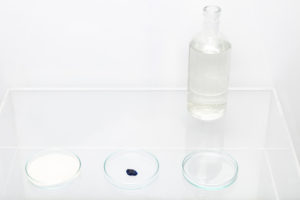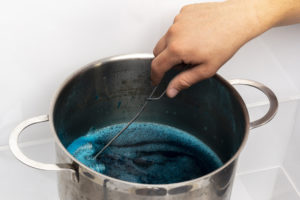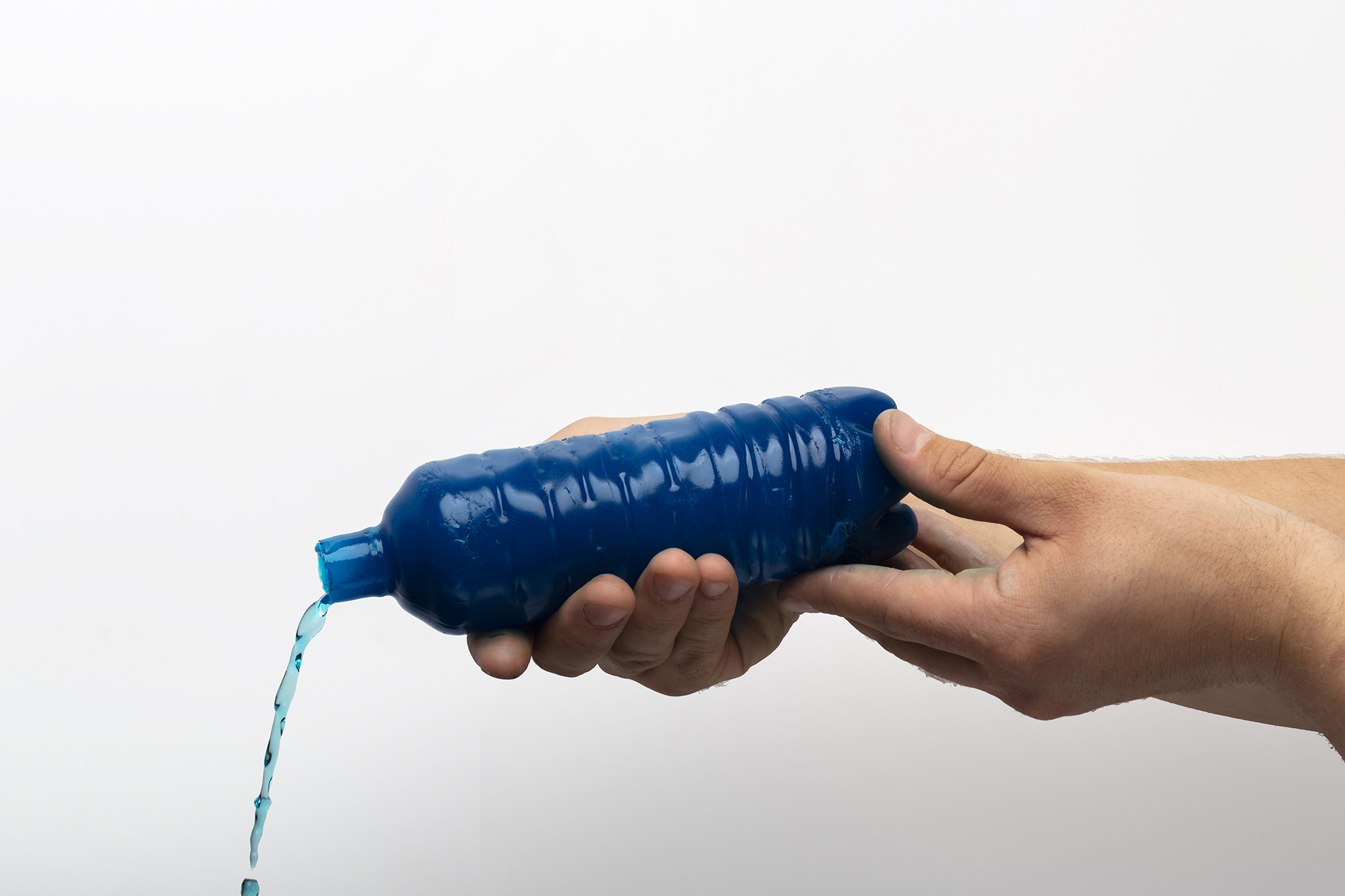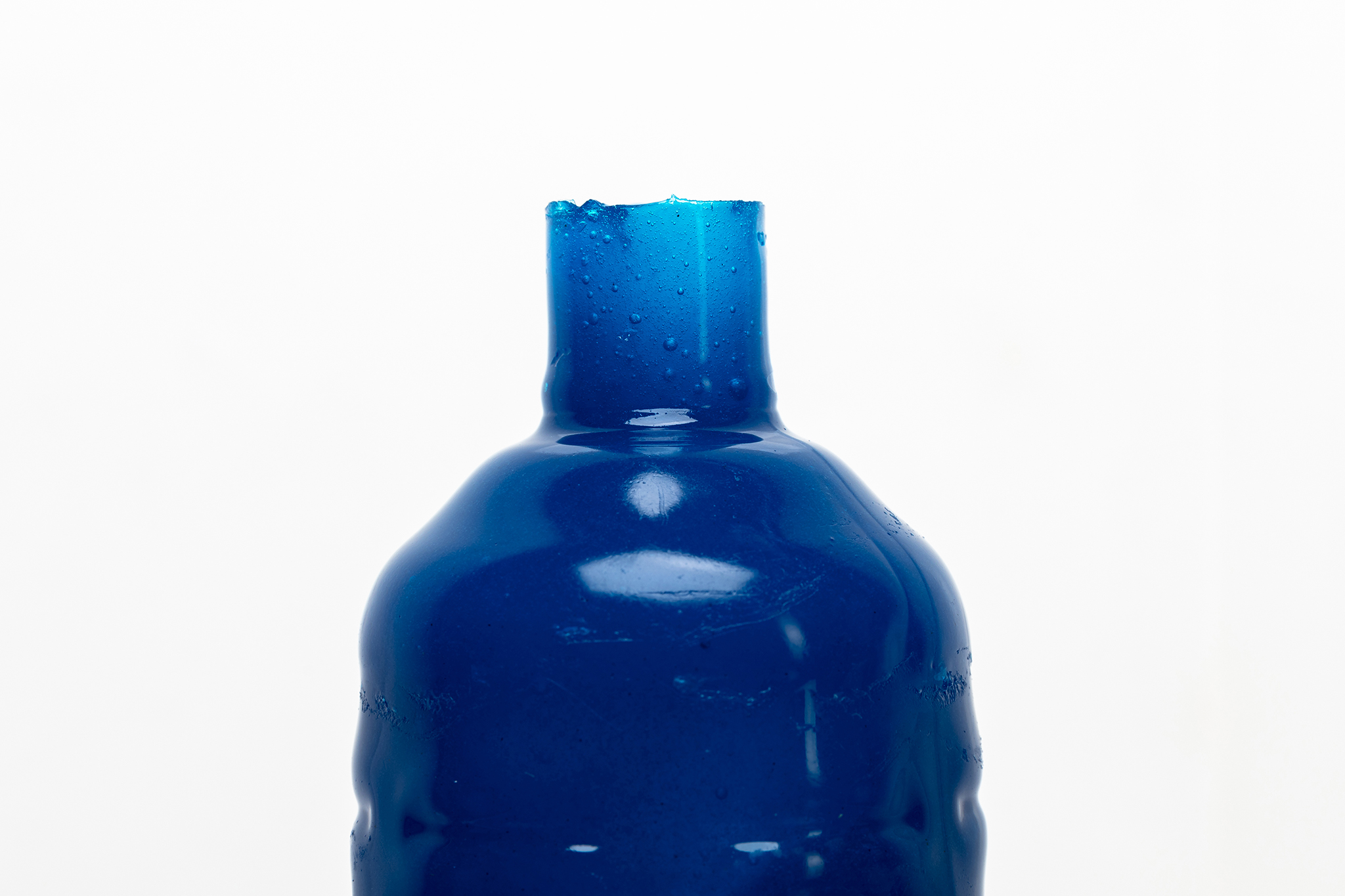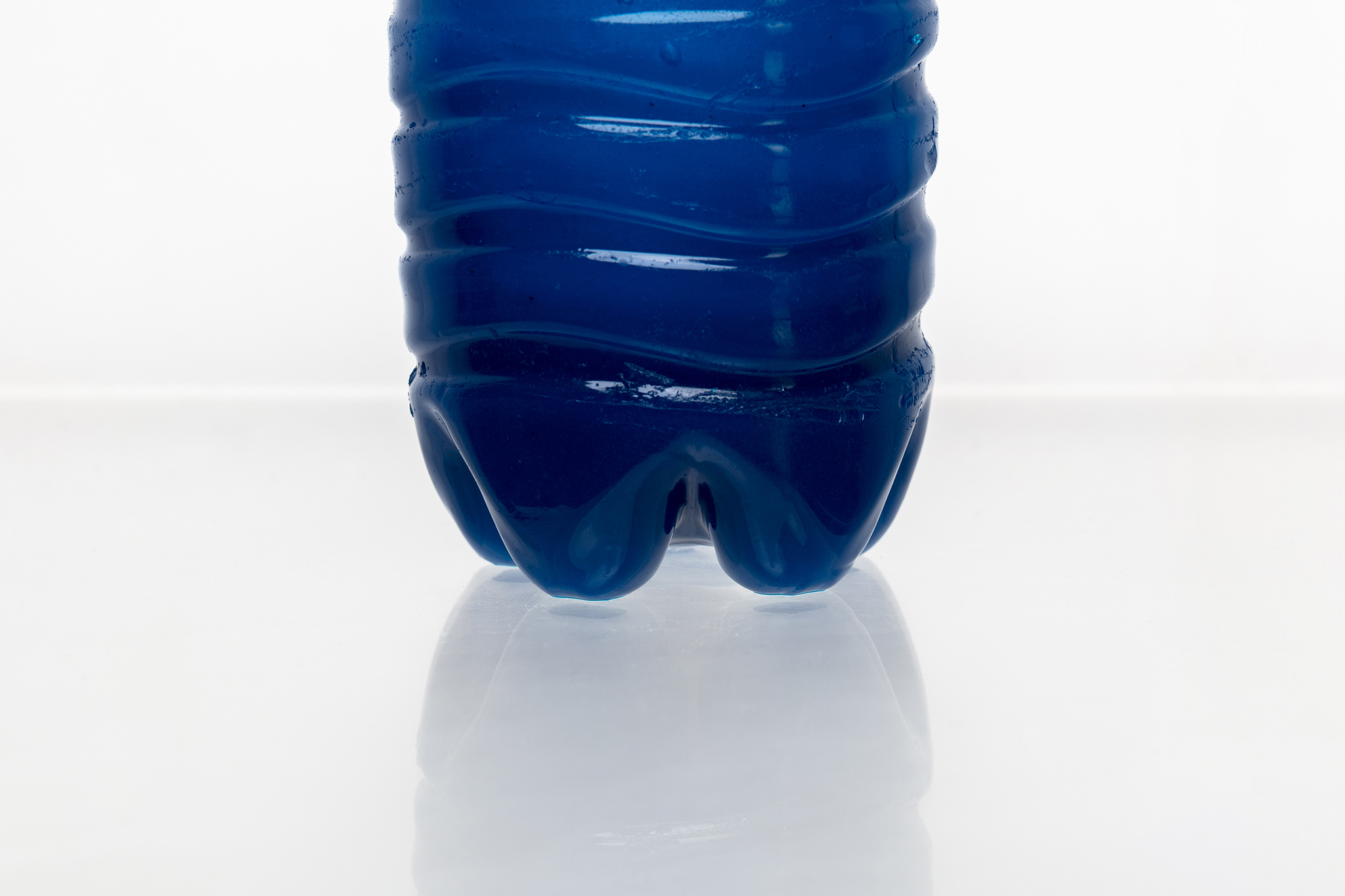Designt Bioplastik das Design? | Is bioplastic designing the design?
Agar-Agar ist ein Galactose-Polymer. Es wird aus Zellwänden verschiedener Algenarten (vor allem Rotalgen) gewonnen. Durch Mischen und Kochen mit Glycerin und Wasser entsteht “Bioplastik.” Es wird schon lange als Geliermittel zum Kochen und Backen verwendet und dient als veganer Ersatz für Gelatine. Seit einiger Zeit wird es auch im Design als ein möglicher Ersatz für Kunststoffe angepriesen. Viele Designer geben sich geheimnisvoll, verraten ihr Rezept gar nicht oder geben nur spärlich Informationen zu ihrem “Bioplastik.“
Ari Jónsson beschreibt in einem TED-Talk eines seiner Projekte: eine abbaubare Wasserflasche aus Agar-Agar. Und fügt an “Maybe it [the project] needs to be stolen. […] Maybe you copy the project like it is. Or maybe you take something from it and add something else to it.” Neben seinem interessanten konzeptuellen Gedanken gibt er allerdings wenig Angaben, wie das Projekt zu kopieren wäre. Durch eine kurze Internetrecherche erfährt man schnell einige Rezepte für “Bioplastik” und einige Informationen mehr zu Ari Jónssons Flasche.
Letzendlich habe ich ein Rezept (24g Agar-Agar, 36g Glycerin, 800ml Wasser, 20 min köcheln) gewählt und das Agar-Agar in eine PET-Flasche gefüllt sie in der Hand rotiert bis die Masse sich verfestigt hat, einige Zeit gekühlt und als letztes die PET-Flasche um die Agar-Agar-Masse entfernt.
Die Flasche behält ihre Form solange sie gefüllt ist, was außerdem dazu führt, dass sie sich langsam im Wasser löst. Leer vertrocknet die Flasche und schrumpft zusammen.
Copied Bio-Plastic Bottle Rezept
Agar-Agar (erhältlich in der Backabteilung) : 24 g
(Leitungs-)Wasser : 800 ml
Gylcerin (erhältlich in Apotheken) : 36 g
1. Alle Zutaten in einem Topf mischen
2. Erhitzen und unter ständigen Rühren ca. 20 Minuten kochen lassen.
3. Wenn die Masse langsam dickflüssig wird in eine geeignete Form (zum Beispiel eine PET-Flasche) gießen.
4. Die Form rotieren bis die Masse fest wird. (Überschüssige Masse kann ausgegossen und neu eingekocht werden.)
5. Die Form anschließend auskühlen lassen (am schnellsten im Kühlschrank).
6. Und fertig ist der Dezeen-Beitrag!
Agaragar is a galactose-polymer. It is made from different kinds of algaes (especially red algae). Throught cooking it with glycerin and water “bioplastic” is created. It is used as a gelling agent for cooking and baking as a vegan alternative to gelatine for a long time already. For a while now it is used in design as an alternative to plastics. Many designers are mysterious and do not want to share their recipe for their “bioplastic.”
Ari Jónsson describes one of his projects in a TED talk: a degradable water bottle made of agaragar. He adds: “Maybe it [the project] needs to be stolen. […] Maybe you copy the project like it is. Or maybe you take something from it and add something else to it.” Besides his interesting conceptual approach he does not add much information on how to copy the project. Doing a short internet research you find a lot of recipes for „bioplastic“ and a few more informations zu Ari Jónsson’s bottle.
In the end I used a recipe (24g agaragar, 36g glycerin, 800ml water, 20 min simmering) and filled a PET-bottle with agaragar. I rotated the bottle until the mass solidifes. Then it has to cool down until you can remove the PET-bottle.
The bottle holds it form as long as it is filled. During that it also slowly dissolves in the water inside. When the bottle is emptied it dries out and shrinks.
Copied Bio-Plastic Bottle Rezept
Agaragar (found in the baking section) : 24 g
Tap water : 800 ml
Gylcerin (found in pharmacies) : 36 g
1. Mix all ingerdients
2. Heat and simmer for around 20 minutes while stirring constantly.
3. When the mass thickens, fill in a suitable mould (e.g. a PET-bottle).
4. Rotate the mould until the mass solidifes (Leftover mass can be recooked and used again.)
5. Cooling the mould (the fastest in a refrigerator).
6. Ready is your Dezeen-entry!
Prozess
